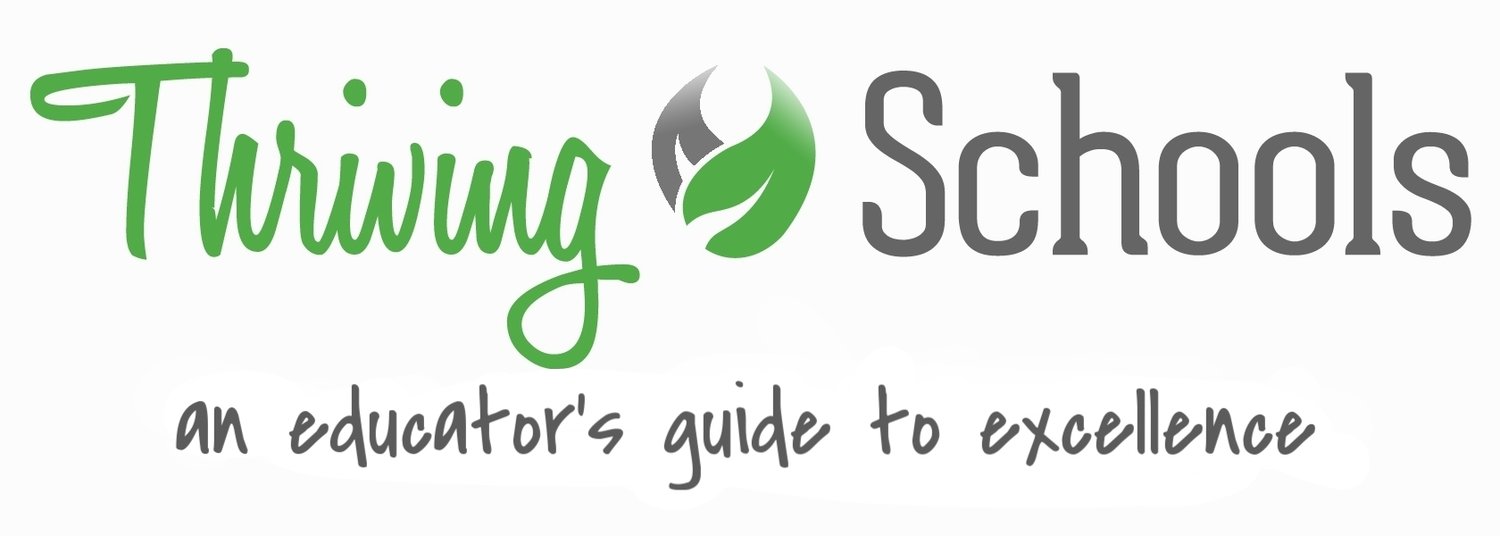How to Improve Instructional Questioning with Earshot
/This piece is based on our recent conversation with Amy Satin Spinelli, Co-founder of Earshot. Previously, Amy was Co-founder of Inquiry Partners, a professional learning group that promotes inquiry-based teaching strategies, and Director of Business Development at Takstream, a company that develops cloud-based tools to advance effective assessment. Amy is a graduate of the Harvard Law School and has her undergraduate degree from Colgate University. Amy is deeply motivated by the promise of technology to help teachers become their best.
You probably know what a Fitbit is – nearly everyone reading this owns one or knows someone who does.
And just like a Fitbit is used by individuals to keep them on target to meet their fitness goals, the Earshot app is intended to be used by teachers to help them monitor and improve their performance in the classroom. It does this by capturing voice data from the classroom and using machine learning to provide teachers with actionable feedback on how they question and engage students. The company believes that it can help teachers more quickly implement research-based best practices by bringing more awareness to their habits and mindsets.
And right now, the Earshot team is looking for schools and organizations that would love to incorporate its toolset into their instructional development plans.
So how does Earshot work?
A lot of educational technology has been developed to help students learn better. In fact, we’ve profiled a few of our favorites on this site:
CK12 - The Benefits of Flexible Curriculum
CommonLit - The Best Online Literature Resource for Teachers
Bitsbox - Engaging Coding Projects for the Classroom
But from Amy Satin Spinelli’s vantage point, very little of that technology has been developed to help teachers improve their instructional practices. Earshot changes that.
The Earshot app is designed to be as easy to use for teachers as possible. A teacher simply takes out their smartphone, opens the app, and decides on a portion of class to record. After class, the recording is uploaded, analyzed using Earshot’s algorithms and machine learning processes, and a quick report is returned to the teacher. The time it takes for the analysis depends on how much of a class period a teacher would like analyzed.
The teacher then receives a report with the following: the teacher talk time ratio (for example, teacher talked 65% of the time, students 20%, and it was silent for the remaining 15% of class), the average question wait time (how many seconds of silence followed each of a teacher’s questions), and a transcript of a teacher’s questions used during class. The app also allows a teacher to track their growth on each of these items over time.
Amy also assured us that Earshot data is private and is only intended to help teachers improve. Amy acknowledged that teachers may be reluctant to record parts of their class due to their perceptions of punitive evaluative processes. But Earshot data is designed to be used by teachers themselves, and is not tied whatsoever to a school or district’s evaluation process.
So what exactly does the research say?
Amy and her team found that teachers vastly overestimate the amount of time students speak during a class period. Obviously, this is important because when teachers are doing most of the talking, they’re also doing most of the thinking. As the ratio of student-to-teacher talk increases, however, the cognitive demand also shifts to students. Amy and her team have found nearly 80% of teachers have been able to improve their talk time ratio after using feedback from Earshot.
Next. A typical classroom exchange happens like this – a teacher asks a question, students raise their hands, and the teacher calls on a student to answer. As Dr. Mary Budd Rowe observed, however, teachers rarely wait more than one second after asking a question before calling on students. While the optimal wait time depends on the nature of the question asked, multiple studies have found that extending wait time improves the accuracy of student responses, the number of students volunteering answers, and overall student achievement. At the same time, the number of students offering “I don’t know” responses declines.
Research also demonstrates that students can improve their critical thinking skills when teachers ask more cognitively demanding questions. After using the Earshot app, teachers in its pilots were asking 33% more open-ended questions.
So how can Earshot benefit you?
As one teacher stated, “With Earshot, I became aware of how often I was calling on the same students over and over. The day after seeing my data with Earshot, I made a conscious effort to ask more open-ended questions and provide plenty of wait time, rather than calling on the first volunteer. And the range of students who participated in class increased dramatically.”
And here’s the exciting part! As mentioned earlier, Amy and her team are looking for interested schools and instructional teams who would love to use this technology to improve their instruction. If you’re interested in helping your teachers get better (while helping create EdTech tools of the future), then Amy and her team would love to hear from you! Amy can be reached at: amy@earshot.ai



